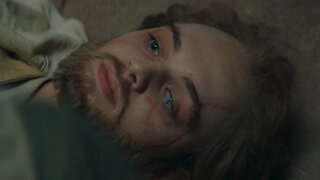UNDERWORLD (1927) George Bancroft, Clive Brook & Evelyn Brent | Crime, Drama, Film-Noir | B&W
Underworld (also released as Paying the Penalty) is a 1927 American silent crime film directed by Josef von Sternberg and starring Clive Brook, Evelyn Brent and George Bancroft. The film launched Sternberg's eight-year collaboration with Paramount Pictures, with whom he would produce his seven films with actress Marlene Dietrich. Journalist and screenwriter Ben Hecht won an Academy Award for Best Original Story.
SYNOPSIS
Boisterous gangster kingpin Bull Weed rehabilitates his former lawyer from his alcoholic haze, but complications arise when he falls for Weed's girlfriend.
Boisterous gangster kingpin 'Bull' Weed rehabilitates the down-and-out 'Rolls Royce' Wensel, a former lawyer who has fallen into alcoholism. The two become confidants, with Rolls Royce's intelligence aiding Weed's schemes, but complications arise when Rolls Royce falls for Weed's girlfriend 'Feathers' McCoy.
Adding to Weed's troubles are attempts by a rival gangster, 'Buck' Mulligan, to muscle in on his territory. Their antagonism climaxes with Weed killing Mulligan and he is imprisoned. Awaiting a death sentence, Rolls Royce devises an escape plan, but he and Feathers face a dilemma, wondering if they should elope together and leave Bull Weed to his fate.
CAST & CREW
George Bancroft as Bull Weed
Evelyn Brent as Feather's McCoy
Clive Brook as Rolls Royce Wensel
Directed by Josef von Sternberg
Written by Ben Hecht, Charles Furthman, Robert N. Lee
Produced by Hector Turnbull, B. P. Schulberg
Cinematography Bert Glennon
Edited by E. Lloyd Sheldon
Distributed by Paramount Pictures
Release date August 20, 1927
Running time 80 minutes
Country United States
Language Silent (English intertitles)
NOTES
Underworld is based on a story by Ben Hecht, a former Chicago crime reporter, and adapted for screenplay by Robert N. Lee with titles by George Marion Jr. It was produced by B. P. Schulberg and Hector Turnbull with cinematography by Bert Glennon and edited by E. Lloyd Sheldon. Sternberg completed Underworld in a record-setting five weeks.
The gangster role played by George Bancroft was modeled on "Terrible" Tommy O'Connor, an Irish-American mobster who gunned down Chicago Police Chief Padraig O'Neil in 1923 but escaped three days before execution and was never apprehended.
Paramount Pictures, initially cool towards the production, predicted the film would fail. Initial release was limited to only one theater, the New York Paramount. The studio did not provide advance publicity. Writer Ben Hecht requested (unsuccessfully) to have his name taken off the credits, due to the dismal prospects for the film.
Contrary to studio expectations, the public response to the New York screening was so positive that Paramount arranged for round-the-clock showings at the Paramount Theatre to "accommodate the unexpected crowds that flocked to the attraction. Time felt the film was realistic in some parts, but disliked the Hollywood cliché of turning an evil character's heart to gold at the end.
Sternberg has been credited with "launching the gangster film genre." Critic Andrew Sarris cautions that Underworld is "less a proto-gangster film than a pre-gangster film" in which the criminal world of the Prohibition Era provides a backdrop for a tragic tale of a "Byronic hero" destroyed, not by "the avenging forces of law and order" but by the eternal vicissitudes of "love, faith and falsehood."
Journalist Ben Hecht's influence appears in the phony flower shop operation and killing of "Bull" Weed's archenemy, "florist" Buck Mulligan, evoking the 1922 real-life murder of kingpin Dion O'Bannon by the Tony Torrios mob. Funeral hearses also abound in the film, notorious as capacious conveyances used to conceal criminal activities and personnel in Chicago. Despite these contemporary references, Underworld does not qualify as "the first gangster film" as Sternberg "showed little interest in the purely gangsterish aspects of the genre" nor the "mechanics of [mob] power." Rather than invoking contemporary social forces and inequities, Sternberg's "Bull" Weed is subject to "implacable Fate", much as the heroes of classical antiquity. The female companions to the outlaws are less gangster molls, addicted to violent men, but protagonists in their own right, who induce "revenge and redemption." The genre would only be properly established in such film classics as Little Caesar (1930), The Public Enemy (1931), Scarface (1932), High Sierra (1941), White Heat (1949), The Asphalt Jungle (1950) and The Killing (1956).
Film critic Dave Kehr, writing for the Chicago Reader in 2014, rates Underworld as one of the great gangster films of the silent era.
#oldmovies #freemovies #crime #drama #filmnoir #classicfilms #freemoviesonline #blackandwhite #lostandfoundfilms
-
 53:07
53:07
Lost n Found Films
30 days agoTHE ARIZONA KID (1939) Roy Rogers, George 'Gabby' Hayes & Sally March | Drama, Western | COLORIZED
77 -
 19:09
19:09
Scammer Payback
4 days agoConfronting Scammer Payback Imposters
99.3K35 -
 9:07
9:07
shaneyyricch
1 day agoAddressing my beef with Harry Sisson
86.6K113 -
 1:52:46
1:52:46
Game On!
22 hours ago $2.75 earnedBoston Celtics Can't Win Game 2! | Sports Morning Espresso Shot
79.5K34 -
 1:00:01
1:00:01
Trumpet Daily
1 day ago $3.08 earnedMarxist Left Continues to Imprison Trump’s Inner Circle - Trumpet Daily | June 7, 2024
68.9K60 -
 11:59:49
11:59:49
The Amber May Show
15 hours ago $12.45 earnedReAwaken America Tour Detroit, MI - DAY 2 | Join General Flynn, Eric Trump, Kash Patel, Mayor Giuliani & Team America + Request Tickets for October 18-19 Selma, NC At: TimeToFreeAmerica.com
95.2K42 -
 12:23
12:23
Freakin' Reviews
1 day agoRice Robot Review: One-Touch Rice Cooker? | As Seen on TV
93.5K36 -
 5:45
5:45
Game Developer
1 day agoHow To Become A Game Dev (While Working A Full Time Job)
81.5K15 -
 4:16
4:16
ryanhoguepassiveincome
1 day ago $12.54 earnedElevate Amazon Ads brand content with your Brand Store
80.2K6 -
 16:19
16:19
RealReaper
1 day ago $7.38 earnedThe Acolyte Is Unwatchable
69.5K54